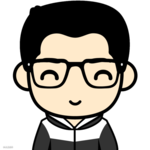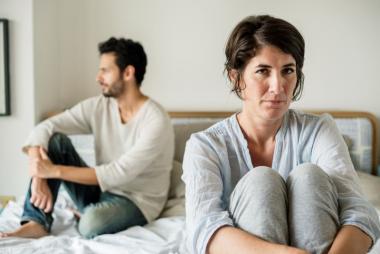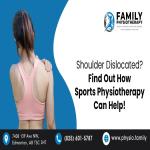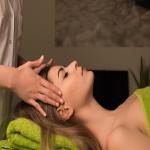Vestibular Physiotherapy comes into the picture as a specialized intervention as the human body relies heavily on the vestibular system, a sophisticated network within the inner ear, for maintaining balance and stability. When this system gets disrupted due to various reasons, it can result in balance and gait disorders. With clinics like Impact Physiotherapy Beaumont offering targeted vestibular rehab treatments, patients in Beaumont have found hope in regaining their mobility and confidence.
Understanding Balance and Gait Disorders
Balance and gait disorders manifest when an individual finds it challenging to maintain stability while standing or walking. These disturbances can arise from a variety of reasons ranging from neurological conditions and muscular problems to issues in the vestibular system. Symptoms might include dizziness, vertigo, stumbling, or frequent falls. For many, these symptoms are not just physically limiting but also emotionally distressing.
Diving Deep into Vestibular Physiotherapy
Vestibular physiotherapy, also known as vestibular rehabilitation, is a specialized form of therapy aimed at alleviating primary and secondary issues caused by vestibular disorders. It's particularly effective in treating various balance and gait disorders. Here are some of the specific disorders that can benefit from vestibular physiotherapy:
- Benign Paroxysmal Positional Vertigo (BPPV): A common disorder caused by calcium particles present in the inner ear; therapy includes maneuvers to reposition these particles.
- Labyrinthitis and Vestibular Neuritis: Infections in the inner ear impacting balance; rehabilitation recalibrates the brain for balance.
- Ménière’s Disease: Characterized by vertigo, ear ringing, and hearing loss, rehab helps manage its effects.
- Bilateral Vestibular Loss: Impaired balance nerves on both sides of the head causing vision and balance issues; therapy improves gait and stance.
- Age-related Dizziness and Imbalance: Declining vestibular function with age leads to balance problems; therapy enhances balance and reduces fall risks.
- Migraine-Associated Vertigo: Vertigo is part of migraines; vestibular therapy reduces these symptoms.
- Concussion and Post-concussion Syndrome: Vestibular issues post-concussion lead to dizziness and imbalance; therapy is vital for rehabilitation.
- Persistent Postural-Perceptual Dizziness (PPPD): Chronic non-spinning vertigo and dizziness; therapy aids in management.
- Acoustic Neuroma: A benign tumor on the balance nerve; post-operative therapy addresses balance and dizziness.
Vestibular Physiotherapy Techniques and Interventions for Balance and Gait Disorders
Balance and gait disorders often profoundly impact an individual's mobility, independence, and quality of life. Addressing these challenges, vestibular physiotherapy deploys a set of specialized techniques:
- Static and Dynamic Balance Exercises: These exercises focus on improving an individual's ability to maintain posture in both stationary and moving conditions. For example, standing on one foot or walking on uneven surfaces can help enhance stability and proprioception.
- Gait Training: Targeted exercises to improve walking patterns, ensuring that the patient can walk safely and efficiently. This can include the use of treadmills, walking over different terrains, and integrating obstacles to enhance adaptability.
- Functional Mobility Training: Exercises replicating routine actions like rising from a chair, climbing stairs, or bending to pick up objects to ensure the individual can perform them without losing balance.
- Sensory Organization Techniques: Enhancing the body's ability to utilize and prioritize sensory information from the eyes, inner ear, and proprioceptive system for optimal balance maintenance. This could involve exercises on varying surfaces or in different lighting conditions.
- Strength and Flexibility Exercises: Weak muscles and lack of flexibility can contribute to poor balance and gait. Targeted exercises can address these deficiencies, giving the body a better foundation for movement.
- Postural Re-education: This focuses on aligning the body's posture to reduce strain on the vestibular system and enhance overall stability. Patients are taught how to maintain optimal postures during various activities.
- Canalith Repositioning Maneuvers: Especially beneficial for those with BPPV, where dislodged crystals in the inner ear can cause dizziness and imbalance. Specific head movements can help reposition these crystals, alleviating symptoms.
- Neuromotor Coordination Activities: These exercises enhance the coordination between different parts of the nervous system, ensuring smoother and more stable movements. Activities can involve responding to visual cues or multi-tasking challenges.
- Biofeedback Training: Using electronic monitoring, patients can receive immediate data on their postural adjustments, helping them understand and improve their balance responses.
- Footwear and Orthotic Recommendations: Sometimes, the right footwear or orthotic support can make a significant difference in gait and balance, providing added stability and support.
These interventions, tailored to the individual's specific needs and challenges, can greatly enhance stability, improve walking patterns, and reduce the risk of falls or injuries.
Physiotherapy: Leading the Way in Vestibular Care
With a team of dedicated physiotherapists, state-of-the-art techniques and evidence-based practices are employed to ensure patients receive quality care. Their comprehensive approach not only addresses physical symptoms but also offers support for the emotional challenges that often accompany balance and gait disorders.
Lifestyle Changes to Complement Vestibular Physiotherapy
In addition to the prescribed therapy, making certain lifestyle adjustments can significantly enhance the rehabilitation process:
Dietary Changes: Reducing salt and caffeine intake often helps manage symptoms.
Stress Management: Techniques like meditation, yoga, and deep-breathing exercises can alleviate symptoms exacerbated by stress.
Avoiding Triggers: Recognizing and avoiding specific triggers, such as sudden movements or specific foods, can prevent flare-ups.
Safe Mobility: Using support like walking aids during the initial stages of therapy ensures safety.
Embracing the Power of Vestibular Physiotherapy
Balance and gait disorders, while daunting, don't have to dictate the course of one's life. With the expertise available in vestibular Physiotherapy Beaumont at Impact Physiotherapy, individuals have the tools and support necessary to reclaim their balance and confidence. As we continue to understand more about the vestibular system and its intricate role in our daily movements, it becomes clear that Vestibular Physiotherapy will remain an invaluable resource for those seeking to stand firm in the face of these challenges.
Also read about:
Navigating Dizziness The Role of Vestibular Physiotherapy
Balanced Foundations Your Journey with Pelvic Floor Physiotherapy
Best Furniture Shop in UAE
















